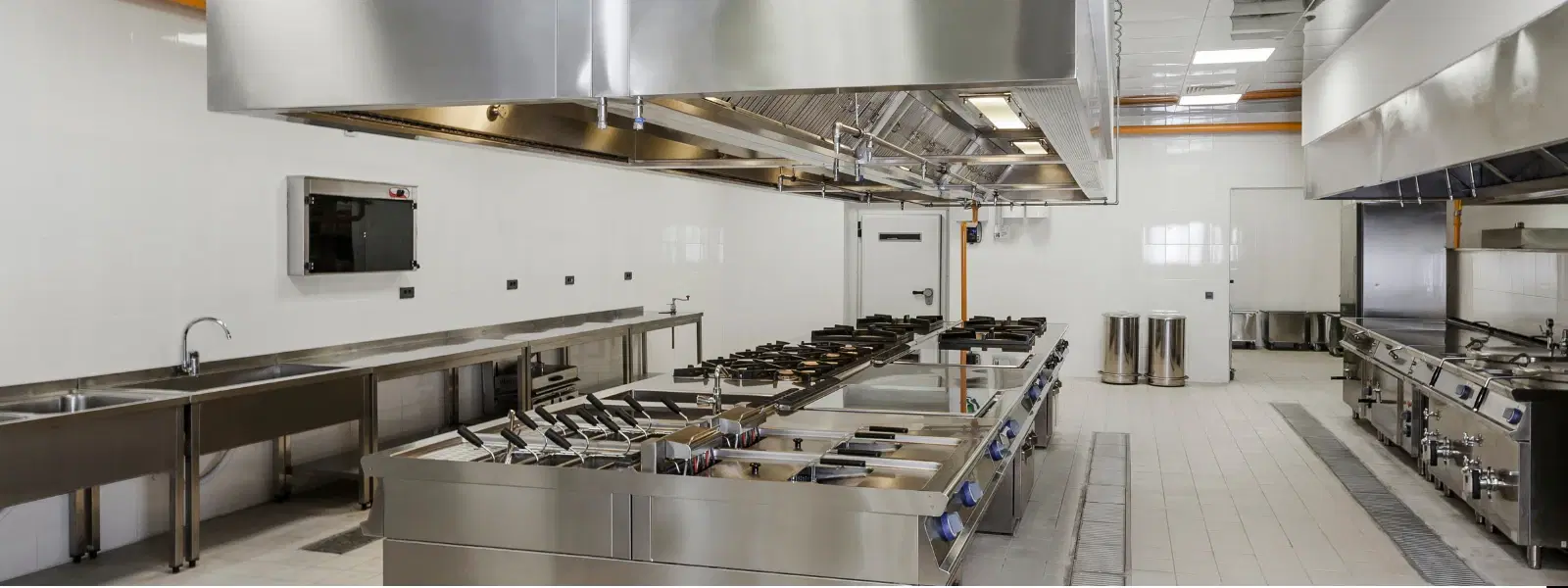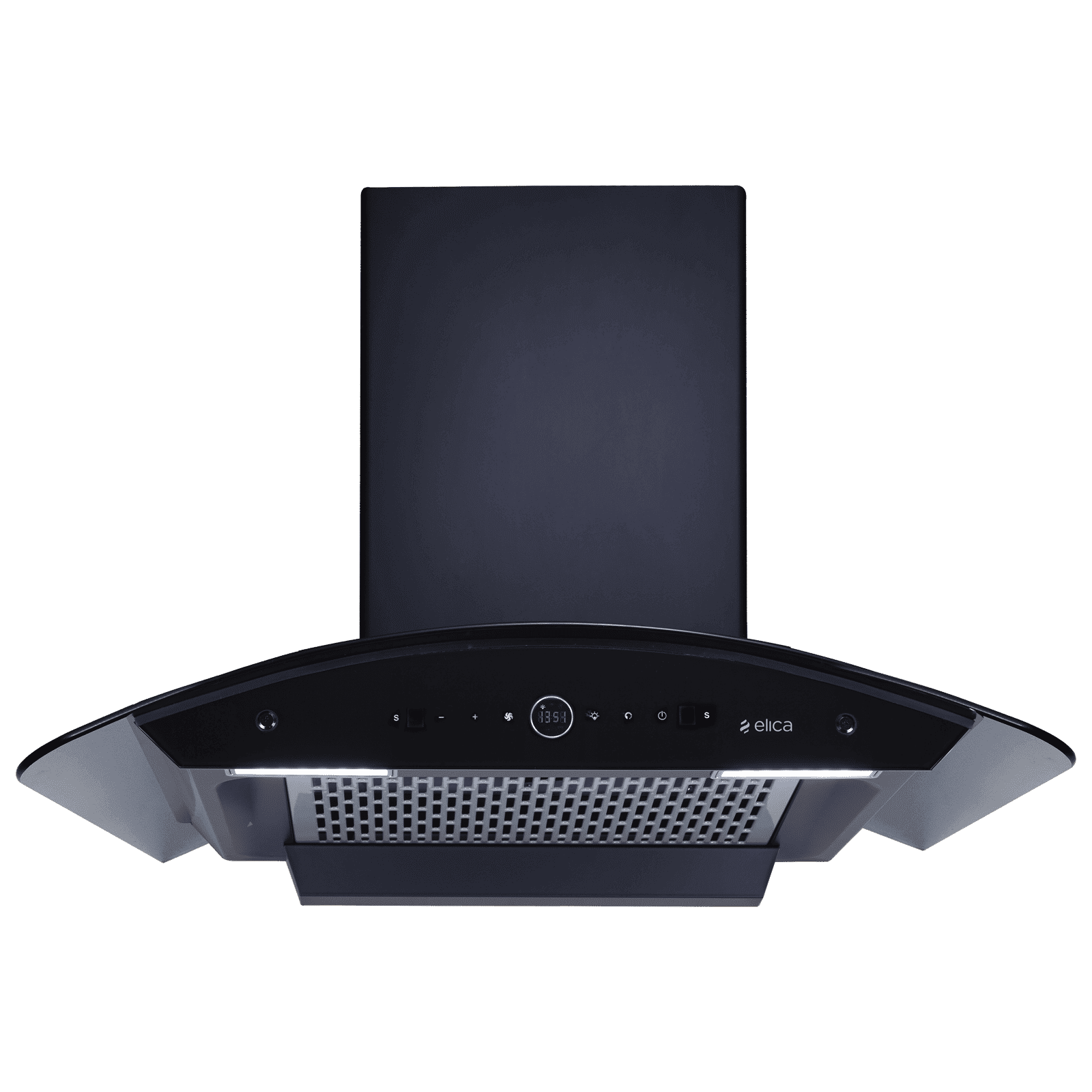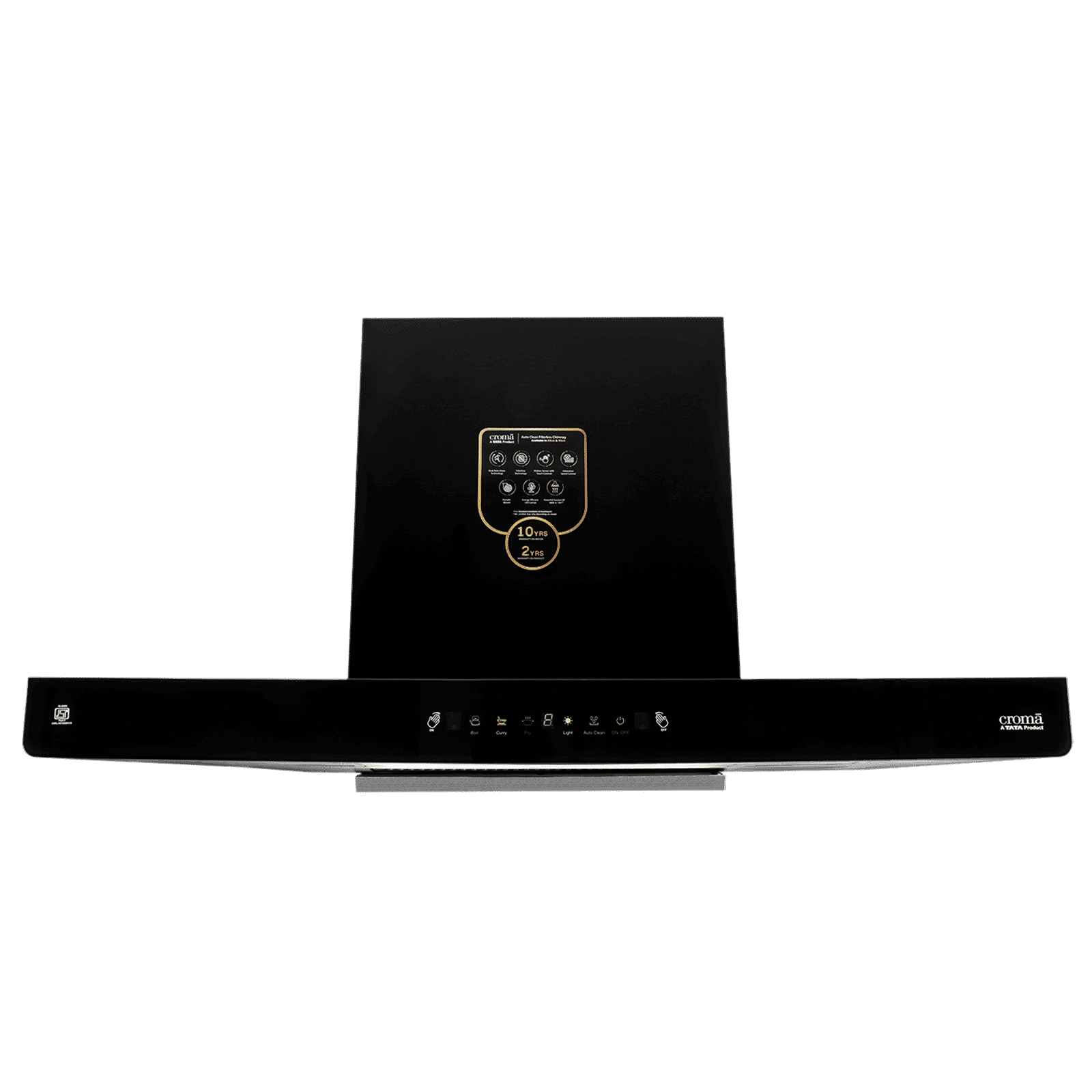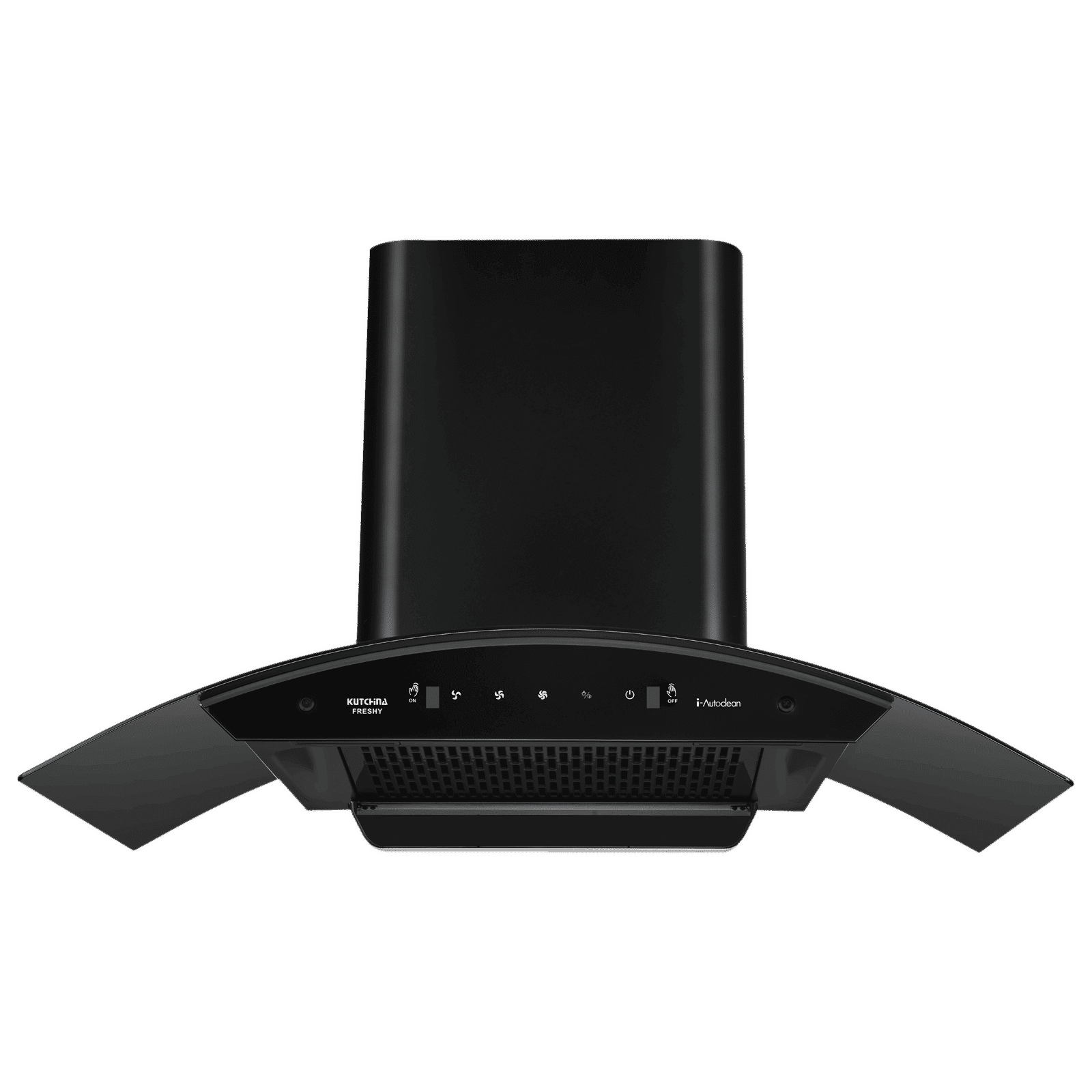
Home Appliances
•05 min read

Buy elica PRO PLUS FL BLDC 75cm 1600m3/hr Ducted Auto Clean Wall Mounted Chimney with Motion Sensor Control (Black) online at best prices from Croma. Check product details, reviews & more. Shop now!
Ever walked into a hotel kitchen and marvelled at its clean, smoke-free environment? The secret lies in its innovative ventilation solutions. In the world of professional kitchens, ensuring a safe, efficient, and comfortable workspace is non-negotiable. Today, we explore the two main systems that make it possible: the hotel Kitchen Chimney and the exhaust system. By understanding these systems, you will be better equipped to decide which solution suits your needs best, based on functionality, installation, and maintenance requirements.
A hotel Kitchen Chimney is specifically designed to extract smoke and eliminate odours in a bustling culinary environment. Acting as a key component in smoke extraction, a professional kitchen chimney channels away harmful vapours to ensure that the atmosphere remains clear. When you opt for a hotel kitchen chimney, you invest in cleaner air and a more productive workspace. The chimney’s design is crucial in preventing the accumulation of smoke and greasy particles, making it a preferred choice for many establishments that place high emphasis on hygiene and safety.
Various types of chimneys are available for commercial kitchens. From heavy-duty kitchen chimneys to industrial kitchen chimneys, each type of system is engineered to meet the challenges of large-scale cooking operations. For instance, kitchen chimney for hotels are built to withstand constant use, while a restaurant kitchen chimney or large kitchen chimneys might be chosen when space or volume demands more robust extraction capabilities. Ultimately, selecting a commercial kitchen chimney that aligns with your specific requirements is essential to maintain operational efficiency and air quality.
Unlike chimneys that primarily focus on smoke extraction, a hotel kitchen exhaust system is designed to maintain overall air circulation. This system efficiently removes not only smoke, but also excess heat, grease, and other particulates from the kitchen environment. With a well-installed exhaust system, kitchens benefit from a balanced flow of fresh air, ensuring that every corner remains free from the hazards of prolonged heat and accumulated pollutants. The broad functionality of an exhaust system makes it indispensable in scenarios where managing kitchen heat is just as critical as smoke removal.
A typical kitchen exhaust system comprises several key components that work in harmony. Ducts serve the essential purpose of guiding extracted air out of the premises, while powerful fans ensure a continuous air flow. Integrated filters are tasked with capturing grease and tiny particulates, ultimately reducing the risk of fire hazards and enhancing overall air quality. When considering a hotel kitchen smoke extractor or a comprehensive hotel kitchen ventilation system, it is these very components that define the system’s effectiveness and efficiency.

Buy Croma AG1112 90cm 1500m³/hr Auto Clean Wall Mounted Chimney with Touch Control (Black) online at best prices from Croma. Check product details, reviews & more. Shop now!
At the core, the primary distinction between a chimney and an exhaust system lies in their functionality. A hotel kitchen chimney specialises in the extraction of smoke, ensuring that any visual disruption or lingering odour is quickly removed. Conversely, an exhaust system takes on a broader role. It not only extracts smoke but also manages ambient air circulation, heat, and grease dissipation. This difference is crucial, particularly when considering the demands of varying kitchen sizes and cooking intensities.
Design and installation differ significantly between the two systems. Hotel kitchen chimneys are typically positioned directly above the cooking stations. They emerge as a single unit that funnels smoke away from the immediate vicinity. In contrast, exhaust systems involve a network of ducts alongside powerful fans strategically installed to facilitate effective air movement. For many, the choice between installing a hotel kitchen chimney or setting up a comprehensive exhaust arrangement hinges on the overall design and layout of the kitchen space.
Efficiency is another area where these systems diverge. A dedicated chimney boasts rapid smoke extraction, which is ideal for kitchens with moderate cooking activity. However, exhaust systems prove more efficient in larger, high-volume kitchens. They routinely manage not only smoke but also the accumulation of heat and grease over prolonged periods. Maintenance should also be taken into account; while both systems require regular upkeep, a chimney might demand simpler cleaning procedures compared to the more complex maintenance needed for exhaust system ducts and fans. Thus, each solution comes with its own set of long-term care considerations depending on operational demands.
When deciding between a kitchen chimney for hotels and an exhaust system, several key factors come into play. First, consider the size of your kitchen and the volume of cooking operations. Larger commercial kitchens may benefit from the comprehensive ventilation provided by an exhaust system, while smaller setups might find that a dedicated chimney offers all the necessary features without the need for extensive ductwork. Budget is another consideration; while initial installation costs may vary, the efficiency and maintenance requirements over time should guide your decision. Whether you are looking for a commercial kitchen chimney or exploring other ventilation options, evaluating these factors will help you achieve optimal performance and safety.
Cost is an important aspect as well. The installation, operation, and maintenance of each system come with their own price points. Generally, a hotel kitchen chimney is a more straightforward investment with installation costs that could range according to features and capacity. Conversely, installing a full-fledged hotel kitchen exhaust system may involve higher upfront costs, particularly when it comes to ductwork and specialised components. Nonetheless, the choice between a chimney and an exhaust system should be based on both immediate needs and long-term benefits in energy efficiency and operational reliability.
Pro Tip from Tata Neu
Did you know? While hotel kitchen chimneys are ideal for smaller setups focusing on smoke extraction, exhaust systems are better suited for large-scale operations requiring comprehensive ventilation and heat management. Always balance your choice with factors like kitchen size and cooking volume to maximise efficiency.

Buy Kutchina FRESHY 90cm 1350m3/hr Ducted Wall Mounted Chimney with Filterless Technology (Black) online at best prices from Croma. Check product details, reviews & more. Shop now!
A hotel kitchen chimney specialises in extracting smoke and odours while an exhaust system maintains overall air circulation, managing heat and grease in the kitchen.
For large kitchens with high cooking volumes, an exhaust system is typically more effective due to its ability to handle diverse ventilation needs.
Prices for a hotel kitchen chimney vary based on size and features, generally ranging from INR 4,200 to INR 28,000.
Yes, most professional kitchen chimneys are designed for straightforward installation above cooking stations, ensuring a hassle-free setup.
Regular cleaning of ducts, fans, and filters is essential to maintain efficiency and prevent grease buildup in exhaust systems.
In summary, both hotel kitchen chimneys and exhaust systems play an indispensable role in maintaining air quality, managing heat, and ensuring safety in commercial kitchens. While chimneys excel in direct smoke extraction and odour removal, exhaust systems offer a more holistic approach with comprehensive air circulation and cooling benefits. The choice between the two ultimately depends on the size of your kitchen, cooking volume, and long-term maintenance plans. A well-informed decision in selecting the appropriate system can significantly enhance operational efficiency and help create a safer, more productive kitchen environment.
When considering your next upgrade, think about the unique needs of your culinary space and how each solution might address your challenges. With thoughtful planning and proper maintenance, you can ensure a cleaner, safer, and more rewarding kitchen environment that supports the high standards expected in today’s fast-paced and competitive hotel industry.